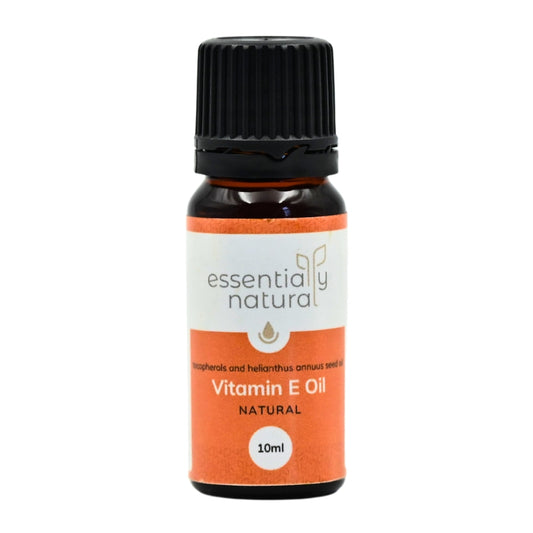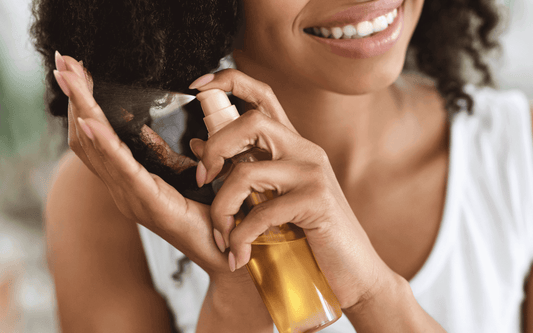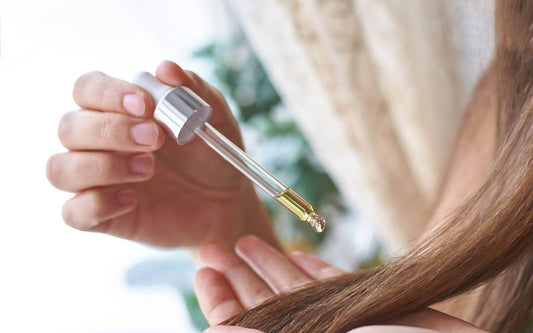
Hair Science Part 1: Hair Anatomy
Juliette van der MeerWelcome to our new blog series on hair! While we have covered various hair formulations before, we haven't done a deep dive into hair science before so we thought it was high time we did so. Journey with us as we explore our hair in this new multi-part series.
Why Does Hair Matter?
Our hair is one of our defining features; in fact hair is one of the characteristics of the mammal class (and humans are included here). Hair has many functions:
- Protects against external factors and helps with thermoregulation
- Produces sebum, sweat and pheromones
- Impacts on social and sexual interactions
- Is a resource of stem cells
Hair on different parts of our body also has different functions.
- Our nasal passage hair acts as a filter for germs
- Our eyebrow and eyelash hairs help keep sweat and dust out of our eyes
- Our body hairs stand up when it is cold, acting like an insulator and helping to keep a layer of warm air close to our skins.
What is The Structure of Hair?
Like with the skin and skincare, having a decent understanding of hair anatomy can help us formulate better products for our hair, and choose better ingredients. We'll be learning all about the hair's anatomy, growth cycles, types and more in this and following blogs, in order to determine the very best ingredients for the hair.
In simple terms, hair has two main parts: the follicle and the shaft.

What Is Hair Follicles?
The hair follicle is like a mini organ and is the living part of our hair. The follicle placement, distribution and type are determined by our genes. Nearly our entire body is covered in hair follicles, except for the palms, soles of the feet and the lips. It is estimated that we have about 5 million hair follicles, and about 100,000 of those are on our heads!
The Functionality Of Hair Follicles
The hair follicle lives in the skin and is connected to a tiny muscle called the arrector pili, which allows our hairs to stand up or lie flat. Blood vessels feed nutrients to the follicle. There are also nerves which connect to the follicle, allowing for a sense of movement such as a draft in the air. Additionally, each follicle has a sebaceous gland that produces sebum, moisturising and protecting the skin, scalp and hair.
The Structure Of Hair Follicles
The bulb of the follicle houses a couple of different cells called the hair matrix:
- Epithelial cells form in the bulb of the follicle, hardening to form a strand of hair
- Keratinocytes (cells that synthesize keratin) also live in the bulb of the follicle, and eventually cover the hair shaft in keratin
- Melanocytes, melanin-forming cells that give our hair pigment, also reside in the follicle
This strand of hair is gradually pushed upwards by the cells beneath, through the skin, where it is referred to as the shaft.
What is The Hair Shaft?
The hair shaft is our visible hair, and is non-living. The shaft has three layers consisting of the inner medulla, central cortex, and outer cuticles.
- The medulla contains large keratinised cells as well as air pockets (variation of which gives hair its porosity).
- The middle layer, the cortex, consists of melanocytes and keratinocytes (melanin and keratin producing cells, respectively). Going up the shaft, the keratinocytes finish producing keratin and eventually die off.
- The outer cuticle consists of hard, overlapping keratinised cells and protects the inner layers. A healthy cuticle has smooth and flat cells, which makes our hair appear in good condition.
What Does Keratin Do In Hair?
As we can now see, our hair mainly consists of keratin, a type of fibrous protein that gives hair its strength and structure. Keratin is composed of amino acids, held together by two kinds of bonds, which you might even have unknowingly interacted with before.
The first kind is the disulfide bond, which is strong and gives your hair its type (straight, curly, kinky etc). Disulfide bonds are not easily broken naturally, and usually require extreme heat or chemicals to do so. You may have chemically broken these bonds if you have ever had your hair relaxed or permed. You broke the bonds to change your hair's shape!
The second kind of bond is the hydrogen bond, which is much weaker. It can be broken by wetting your hair or heating it, which allows hair to be styled with a hair dryer or curling tong.

















